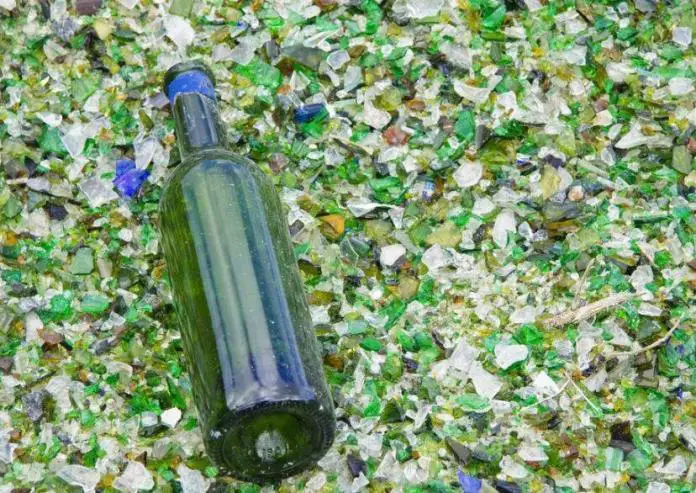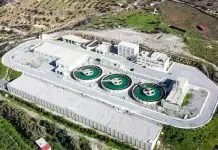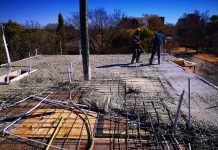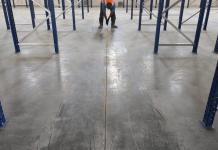Glass is a transparent or translucent material that is used in the production of materials like sheet glass and container glass. It is manufactured by rapidly cooling molten components like silica sand to prevent the creation of visible crystals. Glass is an excellent material for recycling, and its applications, including concrete manufacturing, reduce the embodied energy in concrete production (Gautam et al, 2012). The use of waste glass in concrete production is still uncommon due to the alkali-silica reaction (ASR), which reduces concrete durability and strength (Lui, 2011).
Waste glass aggregate is angular in shape and has a smooth feel. It is tough, but also fragile and brittle (Chen et al, 2006; Taha and Nounu, 2008). Recycling waste glass and turning it into fine aggregate for concrete production reduces landfill space and the demand for natural raw materials in the construction sector (Rakshvir and Barai, 2006). In a study by Ibrahim (2017), it was discovered that waste glass may replace sand up to 40% by weight without affecting the tensile and compressive strengths when compared to control concrete. He observed that 15% partial replacement was the optimum dosage.
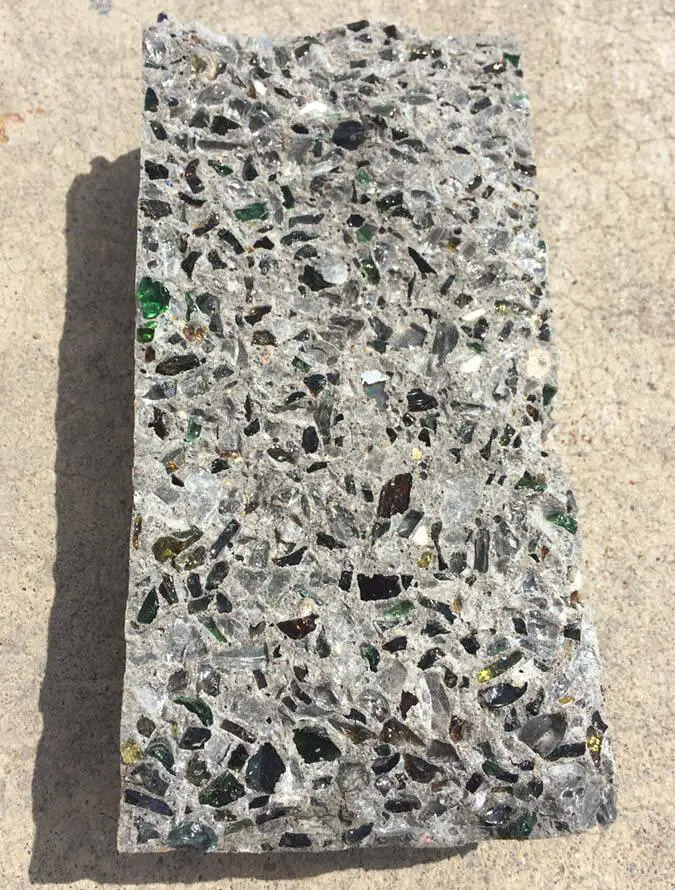
To address the cement/concrete industry’s environmental and economic challenges, Malik et al. (2013) used waste glass as a partial replacement for fine aggregates (sand) in concrete. Several samples were made by replacing sand with glass contents of 10%, 20%, 30%, and 40% by weight in M-25 grade concrete. The samples were tested for compressibility, splitting tensile strength, and density 28 days after curing. The experiment’s findings were compared to those of conventional concrete. Specimens containing crushed waste glass had higher compressive strength for particle sizes of 0.1 – 1.18 mm, with up to 30% weight replacement of small aggregates. Specimens made of glass were also shown to be more cost-effective and environmentally friendly.
Ramana and Samdani (2013) studied the effects of replacing fine sand aggregates with waste glass in the ranges of 0%, 5%, 10%, 15%, 20%, 25%, and 30%. The research work investigated compressive strength, split tensile strength, and flexural strength, among other mechanical properties. The results of the laboratory tests were recorded and compared to traditional concrete results. The results showed that mechanical properties improved when fine aggregates were replaced with crushed glass at 15% but reduced when fine aggregates were replaced at a rate of 30%.
Dabiri et al. (2018) assessed the effects on compressive strength and, more importantly, the effects on the weight of the concrete by replacing fine aggregates with waste glass particles. 27 cube samples were produced to achieve the objectives, with 6 specimens produced of normal concrete and the rest incorporating glass particles mixed in varying amounts. Micro-silica was added to the glass cubes to prevent the Alkali-Silica reaction (ASR). According to the results of the testing, replacing aggregates with glass particles increased the compressive strength by more than 30%. The weight of the concrete was observed to be nearly constant for the most part. The optimum proportion for replacing aggregates with waste glass particles, according to the research, is 50%.
Ganiron et al. (2014) conducted an experimental study to discover a substitute for coarse aggregates in concrete mixtures. In the study, crushed glass bottles were utilised in place of coarse aggregates, and the influence on the mixture’s physical and mechanical properties was observed. The results of the testing showed that replacing coarse aggregates with recycled glass bottles up to 10% by weight and adding 5% by weight to the concrete mix produced acceptable compressive strength values. In the experiment, it was shown that recycled glass bottles may effectively replace coarse aggregates.
Turgut and Yahlizde (2009) studied and compared the physical and mechanical properties of concrete cubes by substituting varying degrees of fine glass (FG) and coarse glass (CG) in the concrete mixture. The values of several parameters including compressive strength, flexural strength, splitting tensile strength, and abrasion resistance of the samples were measured and observed at a 20% FG replacement. The results showed that compressive strength, flexural strength, splitting tensile strength, and abrasion resistance were 69%, 90%, 47%, and 15% respectively greater than the typical concrete sample. According to the findings, at a 20% replacement level by weight of FG, the alkali-silica reaction (ASR) in concrete is reduced.
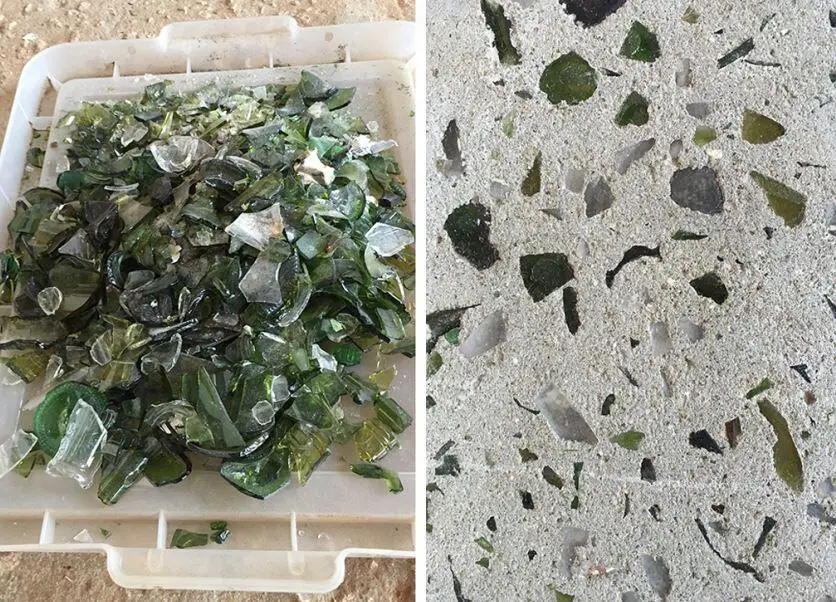
Kavyateja et al. (2016) studied the use of crushed glass as a substitute for fine aggregates in concrete production. The control mix proportion of 1:1.5:3 was batched by volume with a water/cement ratio of 0.5. The replacement rates in the samples ranged from 0% to 40%, with a 10% difference between the two. To study the variation in their compressive strength, concrete cube samples of 150mm x 150mm x 150mm were cast and tested after 3 days, 7 days, 28 days, 56 days, and 90 days. According to the experimental data, the compressive strength increases up to a 20% substitution dosage, then drops at 30% and 40% substitution dosage. The split tensile strength test also demonstrated that the split tensile strength reduces as the glass content increases.
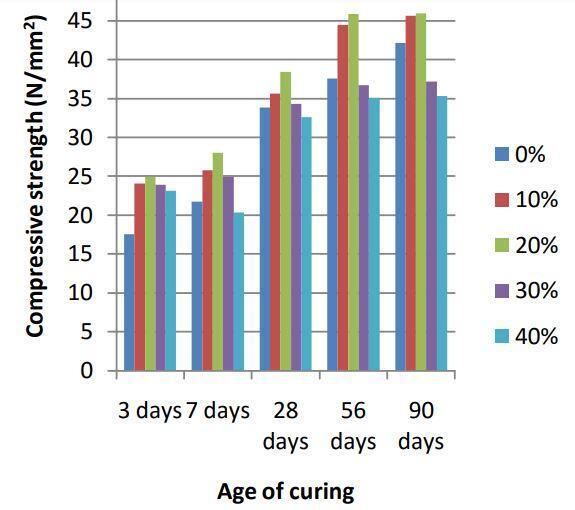
Jain et al (2020) investigated the possibility of utilizing solid waste, such as granite powder from the granite industry, and wasted soda-lime glass powder from waste glass bottles, in concrete production. The durability of blended concrete mixes using waste glass powder and granite powder at various replacement amounts was investigated in the research work. Glass powder (GP) was added to the concrete mixes in amounts of 5%, 10%, 15%, 20%, 25%, and granite powder (GrP) in amounts of 10%, 20%, 30%, 40%, and 50%, respectively, as a partial replacement for cement and sand.
Water absorption, water permeability, acid attack, sulphate attack, and a quick chloride penetration test (RCPT) were used to assess the durability of a series of blended mixes. Microstructure investigation was done using a scanning electron microscope (SEM) and X-ray diffraction (XRD). The durability properties of concrete containing 15% GP and 30% GrP in place of cement and sand, respectively, showed a considerable increase. The results show that glass granite blended concrete has improved water permeability and absorption. The response of the blended mix to sulphate and acid attack was significantly better than that of the control concrete mix.
Ibrahim (2020) utilized waste glass as a partial replacement for coarse aggregate, with ratios of 0%, 5%, 10%, 15%, 20%, 25%, 30%, 35%, 40%, 45%, and 50% by weight. At both the hardened and fresh stages, some mechanical and other properties of concrete were investigated. The results from the study showed that when waste glass was used as a partial replacement for coarse aggregate, it caused a reduction in the slump, density, and water absorption of the concrete. However, it improved the concrete’s tensile and compressive strengths until a 25% weight substitution ratio was reached. According to the results of the tests, when the waste content increases, the strengths gradually increase up to a certain point, after which they gradually decline. The highest level of influence was a 25% substitution ratio.
According to studies published in multiple papers, waste glass and glass powder have all been effectively employed as partial replacements for fine and coarse aggregates in concrete. Waste glass particles can improve concrete’s compressive strength, flexural strength, workability, and tensile strength, according to the findings. By replacing fine aggregates with glass powder in a 20% ratio by weight, the highest compressive strength can be achieved. The addition of waste glass particles in concrete has also shown to be more cost-effective and environmentally friendly than ordinary concrete.
References
[1] Chen C. H., Huang R, Wu J. K., and Yang C. C. (2006): Waste E-glass particles used in cementitious mixtures. Cement and Concrete Res 36(3):449–56
[2] Dabiri H., Sharbatdar M. K., Kavyani A. and Baghdadi M. (2018): The Influence of Replacing Sand with Waste Glass Particle on the Physical and Mechanical Parameters of Concrete. Civil Engineering Journal 2018 (4):1646-1652
[3] Ganiron T. U. (2014): The Effect of Waste Glass Bottles as an Alternative Coarse Aggregates in Concrete Mixture. International Journal of ICT-aided Architecture and Civil Engineering 2014 (02):1-10
[4] Gautam S. P., Srivastava V. and V.C. Agarwal V. C. (2012): Use of glass wastes as fine aggregate in concrete. J. Acad. Indus. Res. 1(6):320-322
[5] Liu M. (2011): Incorporating ground glass in self-compacting concrete. Construction and Building Materials 25 (2): 919-925 https://doi.org/10.1016/j.conbuildmat.2010.06.092
[6] Ibrahim K. I. M (2017): The Effect of Using Waste Glass [WG] as Partial Replacement of sand on Concrete. IOSR Journal of Mechanical and Civil Engineering (IOSR-JMCE) 14(2):41-45
[7] Ibrahim KIM (2020): Recycled Waste Glass [WG] in Concrete. Glob J Eng Sci. 6(1): 2020 http://dx.doi.org/10.33552/GJES.2020.06.000627
[8] Jain K. L.,Sancheti G., Lalit Kumar Gupta L. K. (2020): Durability performance of waste granite and glass powder added concrete, Construction and Building Materials, Volume 252, 2020, 119075, https://doi.org/10.1016/j.conbuildmat.2020.119075
[9] Kavyateja B. V., Reddy P. N., Mohan U. V. (2016): Study of Strength Characteristics of Crushed Glass used as Fine Aggregates in Concrete. International Journal of Research in Engineering and Technology (05):157- 160
[10] Malik M. I., Bashir M., Ahmad S., Taruq T. and Chowdhary U. (2013): Study Of Concrete Involving Use of Waste Glass as Partial Replacement of Fine Aggregates. International Organization of Scientific Research Journal of Engineering 2013 (3):08-13
[11] Taha B., and Nounu G. (2008): Properties of concrete contains mixed color waste recycled glass as sand and cement replacement. Construction and Building Materials 22(5):713–720
[12] Rakshvir M. and Barai S.V. (2006): Studies on recycled aggregates-based concrete. Waste Management & Research 24(3):225–233
[13] Ramana K.V. and Samdani S. S. (2013): Study on Influence of Crushed Waste Glass on Properties of Concrete. International Journal of Science and Research 2013 (4):1034-1039
[14] Turgut P. and Yahlizade E. S. (2009): Research into Concrete Blocks with Waste Glass. International Journal of Civil and Environmental Engineering 3(3):186-92

